Hundreds of portraits in a Little villaje of Spain
Thursday, January 31, 2013
Today I want to tell you a curious story: a painter from a little village of Salamanca (North-west of Spain) has painted the portrait of the 388 inhabitants of that village.
In 1967, many inhabitants of that village (Mogarraz) wanted to search a job in Germany, France or Argentina.Then, they need to have an Identify card.Therefore, the photographer of Mogarraz made pictures to all the neighbors.
Then, the painter from Mogarraz, Florencio Maillo has painted the portraits of all the neighbors, looking at those pictures that were asked by Alejandro Martín (the first Mayor in the Spanish Democracy).
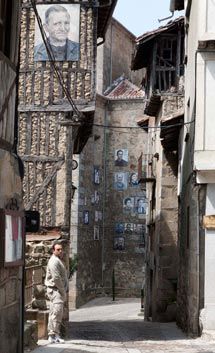
A street of Mogarraz with portraits on facades.
This village is situated in the South of Salamanca, where the inhabitants are named “Los Serranos”.Well, but Florencio Maillo has painted to the inhabitants of Mogarraz on the facades of their houses.
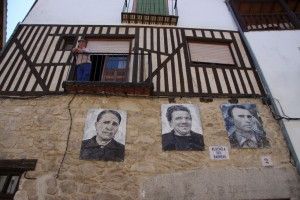
A facade with portraits
Florencio Maillo has worked this project on some giants canvas sheet, on the facades of all the houses.The current Mayor, Concepcion Hernández, has said: “It is as if the neighbors were back to life; and it is so, because their memory emerges among us”.Some examples of this people are the portraits of: the teacher, Mr. Florencio Guzmán (“Castelar”); also the innkeeper, the Uncle Ambrosio.Also, the shoemaker, the Uncle Agapito.
Today, Mogarraz live from the Ecological Agriculture and from the Tourism of Nature.
The President of the Council of Salamanca has said that “This exhibition is unique and unrepeatable”. The County Council has supported this exhibition.
I hope that you can arrange a trip to Mogarraz, in order to see, personally, those portraits.
Kind regards,
Luis.
Sponsored by Costaluz Lawyers.
Please click down here:
.jpg)
 0
Like
Published at 11:37 PM Comments (0)
0
Like
Published at 11:37 PM Comments (0)
Anchovy in Spain
Thursday, January 31, 2013
After 5 years, at least, our fishermen, in the coast of the Sea of Cantabria, can follow fishing anchovy, because the ban has finished.There they name that fish “Bocarte or Anchoa”.Here you have a video to watch how fishermen get that fish:
Fishing anchovy in the Sea of Cantabria
The bocarte becomes to anchoa.
In 2010, the European Union let to Spain to fish bocarte and anchoa; but, 5 years before, the European Union banned anchovy fishing to Spain because this fish was endangered.
The best catches occur at night, when the boatman attracts anchovy floodlights with his boat.
The anchovy fishing we owe to Italian people from Sicily, who reached the Cantabrian coast in the late nineteenth Century.Concretely, Giovanni Vela was the inventor of the anchovy fillets.
In the coast of Cantabria, the village Santoña is the main producer of anchovy.But it also happens in Colindres and Laredo.
I hope that anyday you can come to the Coast of Cantabria to enjoy anchovy and another products.
Kind regards,
Luis.
Sponsored by Costaluz Lawyers.
Please click down here:
.jpg)
 0
Like
Published at 12:09 AM Comments (0)
0
Like
Published at 12:09 AM Comments (0)
A Spanish famous cheese for eat
Tuesday, January 29, 2013
In the month of May 2010 TVE team, headed by actor Juan Echanove, made a documentary about Payoyo Cheese. It is framed in a program entitled: Spain, a country to eat.
Filming took place in facilities having Payoyo Rural Payoyo Cheese Company, SL in Grazalema, more specifically in the Finca Las Hazuelas where livestock abounds own indigenous to the area, race goats and merino sheep from Grazalema.
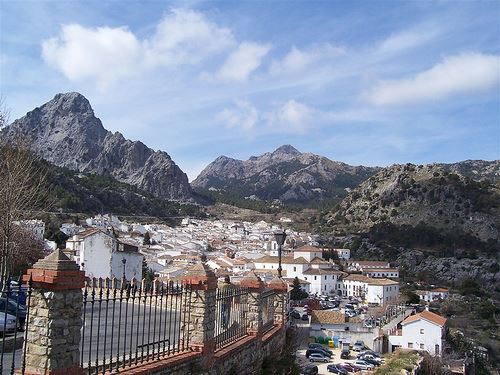
"Grazalema", Cadiz, South of Spain, by elholgazan, at flickr.com
The actor himself milked a goat with a great master, then to taste different types of cheese Payoyo and yogurt Payoyo.
At all times the actor showed off his charm and his good work before the cameras.

"Comiditas de la sierra", Grazalema, Cadiz, South of Spain,by Hustinetten, at flickr.com
On Thursday, September 23, 2010, was issued the first program of the series cited above, where the recording was included in the facilities on the Country Payoyo the Hazuelas.
For more information go to this link and move the player at minute 7:00
http://www.youtube.com/watch?v=Oo2PSt8kp0g&feature=related
Then, the Cheese Payoyo I made with goat milk Payoya, in the Sierra of Grazalema.
There are several types of cheeses: fresh, cured, and emorrado in rosemary and other fresh herbs.
Kind regards,
Luis.
Sponsored by Costaluz Lawyers.
Please click down here:
.jpg)
 0
Like
Published at 11:49 PM Comments (0)
0
Like
Published at 11:49 PM Comments (0)
Another Spanish sayings and proverbs, 43
Tuesday, January 29, 2013
A perro flaco, todas son pulgas = For a skinny dog, all are fleas
It says that the unhappy usually brings behind him all kinds of misfortune.It was emphasized by the spanish writer, Cervantesm in his book "Coloquio de perros" (Colloquium dogs): "Al desdichado, las desdichas le buscan y le hallan, aunque se esconda en los ultimos rincones de la tierra" = Unhappy is search and found by misfortunes, altough he is hiding himself in every corner of the earth.

"flaco", by Nuevo Anden, at flickr.com
Kind regards,
Luis.
Sponsored by Cstaluz Lawyers.
Please click down here:
.jpg)
 0
Like
Published at 12:00 PM Comments (0)
0
Like
Published at 12:00 PM Comments (0)
My Andalusia
Sunday, January 27, 2013
Andalusia is my land, I am from the South. This ia a little part of the lyrics of the song “Yo soy del Sur” (I am from the South), by the group Ecos del Rocío:
"Yo soy del Sur", by Ecos del Rocío.
And this is the lyrics:
PRIMERA
Andalucia es mi tierra, yo soy del sur,
yo soy del sur, andalucía es mi tierra
soy del sur soy andaluz
me gusta el mosto en noviembre
y mirar al cielo azul.
Y mirar al cielo azul, de aquí fueron mis abuelos
se formaron mis mayores, aquí nacieron mis padres
y nacieron mis amores.
Yo soy así, y tienen que comprender
y tienen que comprender, que mis costumbres son esas…
y no las quiero perder
SEGUNDA
Me gusta dormir la siesta, yo soy del sur,
yo soy del sur, me gusta dormir la siesta,
el gazpacho y el buen vino
los caballos bien domaos...y las charlas de casino.
Y las charlas de casino, me gusta el cante sentío
y el baile de cuerpo entero, las guitarras bien templás
y los olivares nuevos
Yo soy así, y tienen que comprender
y tienen que comprender, que mis costumbres son esas…
y no las quiero perder
TERCERA
Me gustan los toros serios, yo soy del sur,
yo soy del sur, me gustan los toros serios
y los toreros con arte, los buenos banderilleros
y las mulillas de arrastre
y las mulillas de arrastre me gusta ver la vendimia
y beber con los amigos y las mujeres bonitas
y las siembras de buen trigo
Yo soy así, y tienen que comprender
y tienen que comprender, que mis costumbres son esas…
y no las quiero perder
CUARTA
Me gustan las romerias, yo soy del sur
yo soy del sur, me gustan las romerias
las hermitas de mi pueblo,
las virgenes bajo palio y los Cristos nazarenos
Y los Cristos nazarenos, los jardines con geranios
las casas blancas con tejas,
los miradores con arcos,
y las ventanas con rejas
Yo soy así, y tienen que comprender
y tienen que comprender, que mis costumbres son esas…
y no las quiero perder.
I want to show you, with images, several things that represent my Andalusia.
For example, I think of one monument and choose: The Alhambra, in Granada:
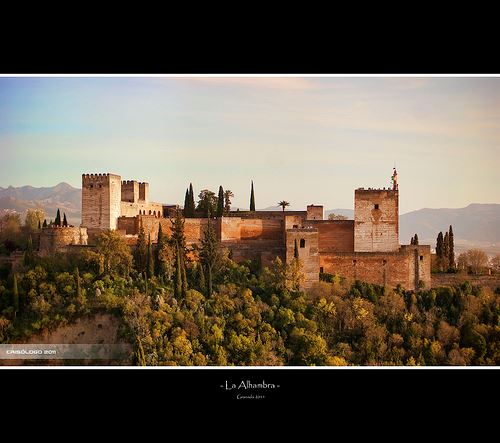
"La Alhambra", Granada, South- east of Spain, by Crisologo, at flickr.com
When I think of a Passion Week, I watch the Passion Week of Málaga.Some years ago, I had the good luck of being a "brother" of the brotherhood of "Mena", taking on my shoulder to the Virgin of the Solitude.
If I think of a mountain, I see Sierra Nevada, with snow --although I do not know to ski:

"Sierra Nevada", Granada, South-east of Spain, by rheauchir, at flickr.com
When I dream with a beach, I see the wonderful beach named "Valdevaqueros", in Tarifa:
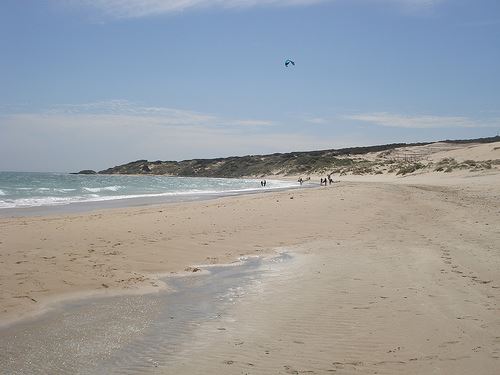
"Valdevaqueros", Tarifa, Cadiz, by guevo, at flickr.com
If I think of a healthy product, I remember the wonderful olive oil, from Jaén:
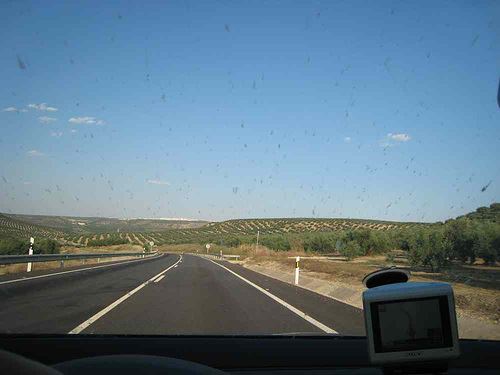
"Olivares", Jaen, South-east of Spain, by estrelas e limóns, at flickr.com

"aceite de oliva virgen extra", by Besoliva jabones naturales, at flickr.ccom
I remember when I ate in a great restaurant: "El Caballo Rojo" (The Red Horse) in Cordoba.It is on the street of the Cardinal Herrero, 28.Its telephone number is: 957 47 5375.This is the restaurant:
.jpg)
"The Red Horse", Cordoba, South of Spain.
And if think of another very spanish product, I remember the jam from Jabugo:
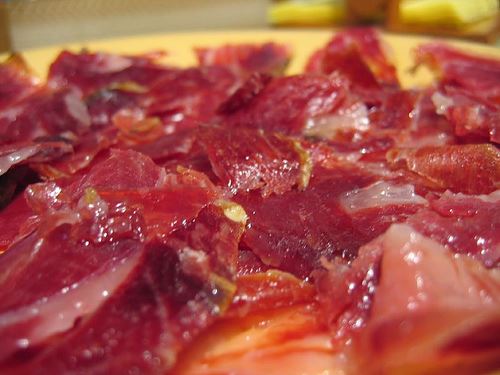
"Jamon Jabugo", Jabugo, Huelva, South-west of Spain, by Hugo´s daddy, at flickr.com
When I thought of a nice town, I saw: Córdoba:
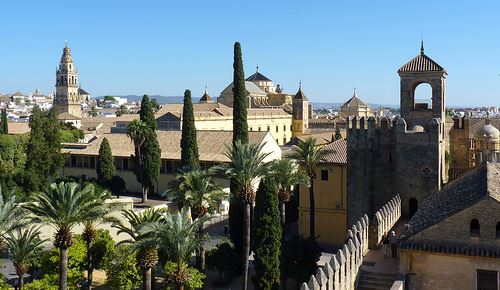
"Cordoba", South of Spain, by t.bo79, at flickr.com
When I was alone and I thought of pretty women, I remembered to women from Córdoba:
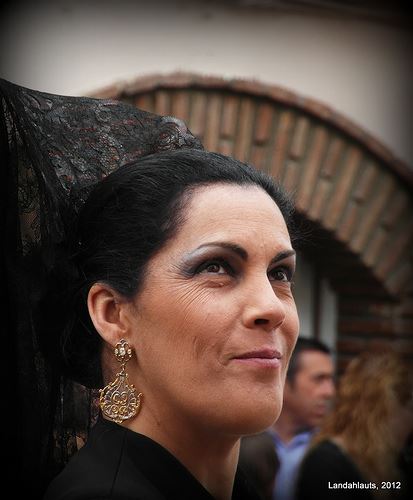
"Semana Santa en Archidona", Córdoba, South of Spain, by Landahlauts, at flickr.com
And when I thuoght of funny people, I remembered to the people from Cádiz, and concretely whe the Carnival is celebrated, in February:
Several "Chirigotas" of 2012.
Here you can watch, at the begining, the group of Chirigota named "Los Puretas del Caribe".Here they sing the following lyrics:
"They were outraged at the lobe toothpick and so never came late to the pharmacy, hushed voices with forms and ways they were gray (gray men were policemen in the seventh years), with force and without words is revealed when people are cheering the speakers, which are vendáis me my freedoms democracy because this is dictatorship".
The second group --represented by some housemaids-- talk about our King (Juan Carlos).And her lyrics say this :
"Must see King Juan Carlos has that piece of life as good, people do not know that to do as King is a conviction, I would not change it for him..... --and the housemaids put the pose of "marujona" for saying " tststststststststst not say that about mijitaaaaaaaa", and sons (girls, Infantas) seemed silly when we bought it, the oldest (Helen) separated and the other (Christine) between now na, gets some blows, control yourself a little something?? sovereign??. Pure art which gives the royal house sides narrated by coughing any house".
The third group is "The Protagonists" and they sing this:
"In his suitcase take a hat last year and start singing before pasodoble advertising that usually appears before a film begins in theaters, movie record? .., Talk between July and Kike, the curtain opens and the movie will be better impossible, not unbeatable seafront ugggg by a bowler hat with ashtray, recount the proceedings, buses and new sites joaquinitos lived with, found that this was a romance and to know more crying and danced not remove anyone, carnival Monday will be etched on my retina hundreds of people listened to the joke in the square mine on the street though your directors gave me a minor role for that being second prize, in the street, you made me feel protagonist".
Surely, all of this is difficult to understand for you; but perhaps now you can have a little idea of the grace in Cadiz.
Anyway, I hope that you can enjoy a little bit....
Kind regards,
Luis.
Sponsored by Costaluz Lawyers.
Please click down here:
.jpg)
 0
Like
Published at 12:13 AM Comments (0)
0
Like
Published at 12:13 AM Comments (0)
The printers 3D in Spain
Friday, January 25, 2013
Some weeks ago, a printer 3D has been presented in a Fair of New York.But also in Spain we have this technology.Of course, just in Hospitalet of Barcelona, concretely in the Foundation CIM.
First of all, you have to know that one difference with respect to traditional printer is that the traditional used ink cartridges,; however, the new printer 3D uses plastic rolls and it falls as a liquid:
.jpg)

With this technology, you can create everything you want: a glass, a shoe –you can make customized shoes--, a mobile cover,jewels, lamps …….. but also it is so useful for Medicine, because Doctors can use prosthesis, for broken bones, for example.


In Spain, there is a company (Group ZSI New Tecnologies) which import, distribute and provide technical service for the entire product range in Spain (printers 3D, Scanners, softwares and accessories.
How works the printer 3D?.Well, it is easy: we start with an image in 3D, created in the computer; then we give the order to the printer 3D, which works with plastic roll. An advantage of this technology is that low prices in the creation of objects.
Another advantages, in a company:
-Review errors and to verify the prototype fixed in few hours.
-Comment with engineering team without possible misunderstanding.
- Provide their customers one or more options of impeccable prototypes in hand, with a rapidity unmatched and very small cost.
Have a good weekend and kind regards,
Luis.
Sponsored by Costaluz Lawyers.
Please click down here:
.jpg)
 0
Like
Published at 3:47 PM Comments (0)
0
Like
Published at 3:47 PM Comments (0)
Zarzuela: La rosa del Azafrán, in Spain
Thursday, January 24, 2013
Everything started because the autor of “The saffron rose” (Federico Romero) was born in the village La Solana, close to Manzanares, where the rose of the saffron is cultivating.
Then, Federico Romero created this piece of Zarzuela in order to reflect all the characters of his village, La Solana.Therefore, Federico is very famous in his village and he has a street, a monument and a Theatrical Association,named “Federico Romero”, there. Even though his family have donate all his belongings, for a Museum –they have donated even his piano--.
In the village, La Solana, veery year, in October, during one week, different pieces of Zarzuela are represented, every night, and the Saturday night the rose of the saffron is reprented.
.jpg)
"La Solana", Castille-La Mancha, middle of Spain.
The Rose of the Saffron is based on the comedy of Felix Lope de Vega, “The Dog in the Manger”.
As in most of the operettas, there are some parts sung and another spoken parts.
“The Dog in the Manger” –who neither eats, neither lets to eat--, talks about an impossible love, cause of social class differences., in this case: among a herder, Juan Pedro, and a youg woman, owner of the farm.Also, appear characters like Carracuca, voluntarily submitted to the beaten that he gets by his wife.Moniquito, the comic Tenor, Santero by profession and few lover of working.Catalina, maid and she is in love with Juan Pedro.Don Generous, a nobleman, who went insane after disappearing his son, and his madness makes him think he is a General Carlist.The Housekeeper, Custody, a very sensible woman. Whom everybody ask advices.And Sagrario, the housekeeper of the farm, who is in love with the boor; but, as he is a boor, but she does not, then “neither eats, neither let to eat”.
The housekeeper,Custody, makes Juan Pedro to believe that the child she carried the Foundling, was the son of him, of this fruit of love with a lady from the village.Then, Juan Pedro believes it and he is very happy.
“The song of the sower” was about to be the anthem of Castilla La Mancha –where the village, La Solana, is--.Here you can watch the representation of “The Song of the Sower”; please click down here:
Zarzuela - La Rosa del Azafran - Cancion del Sembrador
And here you have the lyrics:
Esta mañana muy tempranico salí del pueblo con el hatico y como entonces la aurora venia yo la recibia cantando como un pajarico esta mañana muy tempranico. Por los carriles de los rastrojos soy la hormiguita de los despojos y como tiene tan buenos ojos espiga a veces en los manojos Ay, ay, ay, ay, que trabajo nos manda el señor levantarse y volverse a agachar todo el dia a los aires y el sol ay, ay, ay, ay, ten memoria de mi segador no arrebañes los campos de mies que detrás de las hoces voy yo La espigadora con su esportilla parece la sombra de la cuadrilla sufre espigando tras los segadores los mismos sudores que el hombre que siega y que trilla La segadora con su esportilla. En cuanto suenan las caracolas por esos trigos van ellas solas y se engalanan con amapolas sin abalorios ni agaripolas Ay, ay, ay, ay, que trabajo nos manda el señor levantarse y volverse a agachar todo el dia a los aires y el sol ay, ay, ay, ay, en memoria mi segador no arrebañes los campos de mies que detrás de las hoces voy yo ay, ay, ay, ay, no arrebaño los campos de mies porque aguardo a que vengas tú aquí a escuchar lo que vale mi querer ay, ay, ay, ay, si a tu lado me aguarda un querer no me importan los aires ni el sol ni que arranques de cuajo la mies. This piece was released in 1930. An important difference is that the librettists are, in this case: Federico Romero and Guillermo Fernandez-Shaw.But, the musician is: Jacinto Guerrero In reality, the Rose of the soffren is born in the morning and die in the evening, in the sunset. This is the most known piece of Zarzuela, by the musician Jacinto Guerrero. Enjoy it!. Kind regards, Luis. Sponsored by Costaluz Lawyers. Please click down here:
.jpg)
 0
Like
Published at 11:31 PM Comments (0)
0
Like
Published at 11:31 PM Comments (0)
Iznájar: An interesting villaje in Cordoba, Spain
Wednesday, January 23, 2013
This nice village is situated 110 Kilometers from Córdoba, along the Iznájar reservoir –that is also known as the Lake of Andalusia--.
The houses of Iznájar are built on a hillside, 553 meters over the sea, and at the top are the church and the castle.
This village has around 5000 people and the main activity is agriculture and especially olive growing. Lately it is promoting rural tourism.
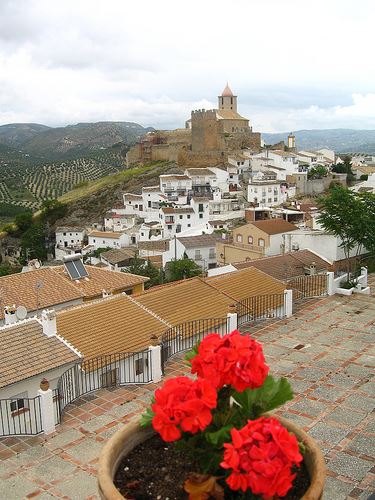
"Iznájar, Spain", Córdoba, South of Spain, by Donnr MB, at flickr.com
The Holy Week is the most solemn and representative of the province of Cordoba. The staging of El Paso in the parish church of Iznajar is the living representation of the drama of Pason by the townspeople.
You can visit:
The Castle: This strength of Muslim era begun in the eighth century, but its reforms would extend until the fifteenth century. Three centuries later adapted as a home of the Duke of Sesa Administrator a position he fulfilled until the nineteenth century. Today is very deteriorated. Retains some towers and is surrounded by walls that surrounded the villa in the eleventh century.
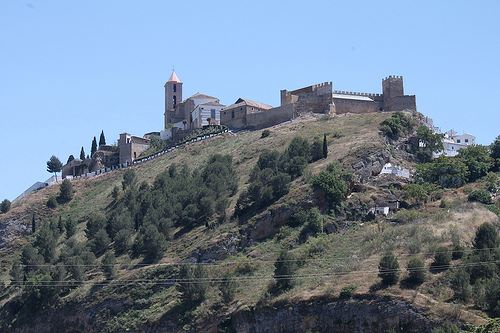
"Iznájar - 04", Cordoba, South of Spain, at flickr.com
Church of Santiago: The temple was built in the mid-sixteenth century. ending the play in the middle of the seventeenth century. It has a Renaissancenstyle and is linked to the Architect Hernan Ruiz The Young. Inside, spacious and Latin cross, stands coffered dome covering the apse and altar, of the Baroque era.From here, you have some very good views, with the reservoir of the Genil river, in the lower.
Hermitage of the Virgin of Piety: Also called “The Old”.It was built in the Century XVII. It has a single nave vaulted keeping a Baroque chapel of hosting the image of the Virgin, patron saint of the town.
Municipal Library: It is situated in the same square than the Castle. It has the particularity that this is where the old local granary was.
Reservoir of Iznájar: It is also known as “The Lake of Andalusia”.It has more than 900 million of cubic meters of capacity, 100 kilometers of shore and 32 kilometers of length.So, it is perfect for water sports, fishing or swimming. The Nautical School organizes courses Subbetica canoeing and sailing.
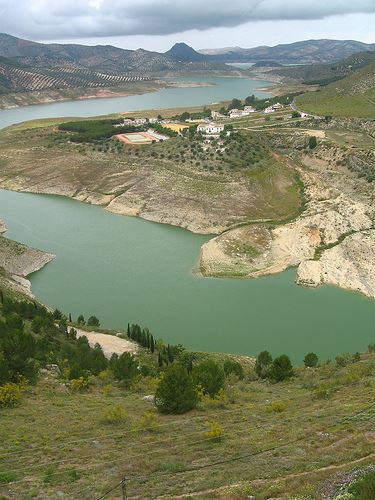
"Iznájar, Spain", Cordoba, South of Spain, by Donnr MB, at flickr.com
Lookouts: Some viewpoints are located in the village of the New Square, from where there is all the village near the swamp; Cross of Saint Peter and the viewpoints of the last Peñas.These are the highest of the village and since they yield great views swamp and part of the land of the Subbetica of Cordoba.
Patio of Comedy: Perhaps the nicer place in the village is this little square, beside the lookouts, with views to the reservoir. The blue pot always full of flowers, give this place a great charm.
Rural Tourism Accommodation:
The Farmhouse of Frías: Telephone number: 957 33 40 05. Five kilometers from the village.This Farmhouse is built with rectangular floor.It has 12 apartments, separated by cloister with columns. The exterior decoration is herbal, and architecture is typical of the farmhouses of the zone.It has dining room, library, lounge, swimming pool, paddocks and orchard.
Bon voyage!.
Kind regards,
Luis.
Sponsored by Costaluz Lawyers.
Please clic down here:
.jpg)
 0
Like
Published at 3:02 PM Comments (0)
0
Like
Published at 3:02 PM Comments (0)
New Test Drive in Spain
Monday, January 21, 2013
Today starts the New Test Drive in Spain.
In the practical part, student has to know the whole vehicle, before entering it.After that he has to take the vehicle to where the examiner tell him; but the examiner will not say which way to take.
Student has also to know very well the mechanics of the vehicle.
But, in the beginning of the test, the examiner will ask to the student where the change of the wiper is and where the switch to high beams is.These two things are compulsories in Europe, but not in Spain.However, since now, it will be compulsory in Spain too.
The practical test will spend 25 minutes, at a minimum.
Student has to drive by himself, but he also can use a GPS device, if the vehicle has it.Everythig this will happen in the 10 first minutes of the test.After it, the examiner will began to give instructions to the student.
Whe the text finish, the examiner will sit at a table with student.Then, the examiner will tell him the result.
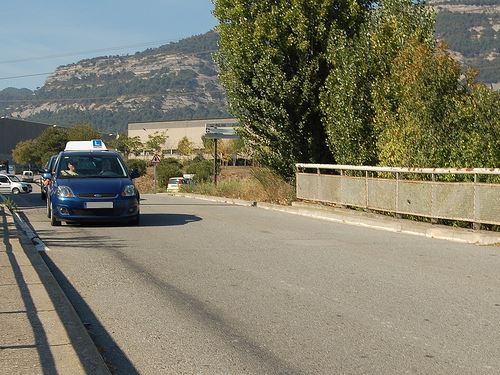
"Coche de Autoescuela", Spain, by Circula Seguro, at flickr.com
But before the practical test, student has to do a theoretical examination.Since the last October, students have a new method to study the theoretical examination: a base of tst with 15.500 questions.Now it is impossible that students can copy another test, because each one is completely different.
The new test uses a simpler language.And it has some better pictures to accompany the questions.
The foreigners who are living in Spain during two years, have to renew their driving license, each 5 or 10 years, if they are more or less than 65 years old.
Good luck for everybody!.
Kind regards,
Luis.
Sponsored by Costaluz Lawyers.
Please click down here:
.jpg)
 0
Like
Published at 1:07 PM Comments (0)
0
Like
Published at 1:07 PM Comments (0)
A spanish vaccine against Alzheimer
Friday, January 18, 2013
Some spanish researchers have designed a vaccine against Alzheimer.
The treatment, which could be marketed in ten years, is effective in 50% of cases of the disease. It has been successfully tested in mice.
The fight against Alzheimer is progressing. Proof of this is the design of a vaccine against the neurodegenerative disease developed by a group of Spanish researchers from the Biomedical Research Center,in La Coruña (Galice, North-west of Spain), led by Dr. Ramón Cacabelos. A vaccine has been successful in animals and has already achieved the patent to manufacture in the U.S., where they will begin clinical trials should be favorable, would be marketed in eight or ten years.

Dr. Cacabelos
"Alzheimer's is an incurable, hereditary," said last Thursday Dr. Arturo Fernandez-Cruz, professor of medicine at the University Complutense of Madrid, in the presentation of research results. And is that data are worrisome. The Alzheimer in Spain affects between 500.000 and 1.3 million people. The number skyrockets to 36 million worldwide. A number that can reach 115 million in 2050. In fact, every four seconds a new case occurs. "It is one of the diseases that damages our dignity as human beings," said Dr. Cacabelos, director of research. In fact, it is the fourth largest health problem incidence. Alzheimer causes atrophy and premature death of neurons.
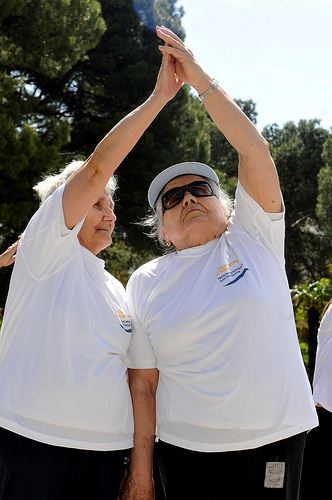
"Mas de 330 personas mayores han participado en el II Encuentro de Yoga", Aragón, North-east of Spain, by Gobierno de Aragón, at flickr.com
Furthermore, although aging is a risk factor, development of the disease depends on the genome of each individual. However, as Dr. Cacabelos recalled, "there are over 600 genes related to the development of disease."
The Spanish research team has developed the vaccine EB-101 as a preventive and therapeutic. In the mouse study phase has achieved important results. The immunized animals did not develop the disease and those who already manifest symptoms of Alzheimer before vaccination, was reduced evolution of the disease. "So far, all he did fail to previous vaccines we have avoided", said Dr. Cacabelos. And in rodent tests not suffered brain hemorrhages or neuroinflammatory reactions that ended earlier research trials.
"When given disease symptoms in old age, the number of dead neurons is so great that the therapeutic treatments are minimized.Therefore, the key is prevention”, warned Dr. Cacabelos.
And that's where his acts would have inoculated vaccine at age 35 in cases of serious risks (genetic or hereditary reasons) or 45 in normal records. Moreover, there would be a single dose, but that would be required in batch set months. In any case, the next step is the human clinical trial, to be held in the U.S. in the coming months.
However, if the vaccine reaches the market EB-101, would not cure the disease Alzheimer. The doctor Cacabelos has called prudence explaining that the treatment would only be valid in the 40% or 50% of the cases. The rest would need different strategies to be developed.
I hope that the researchers spend less time than ten years to market the vaccine.
Kind regards,
Luis.
Sponsored by Costaluz Lawyers.
Please click down here:
.jpg)
 0
Like
Published at 11:30 AM Comments (3)
0
Like
Published at 11:30 AM Comments (3)
Another Spanish sayings and proverbs, 42
Thursday, January 17, 2013
A palo seco:
Taken sailor slang, which means sailing, stormy weather to prevention, with all sails furled, in plain text, by analogy, what is said by its special circumstance, is so brief, simple, and without ordinary supplements .For example, anybody says: "We were nothing and just take a bite a capella". A capella = A palo seco.
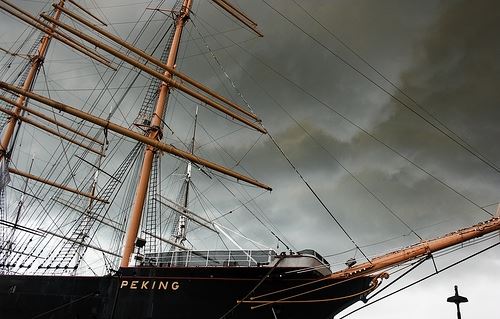
"Viajes sin retorno", by Adriá Navarro Jiménez, at flickr.com
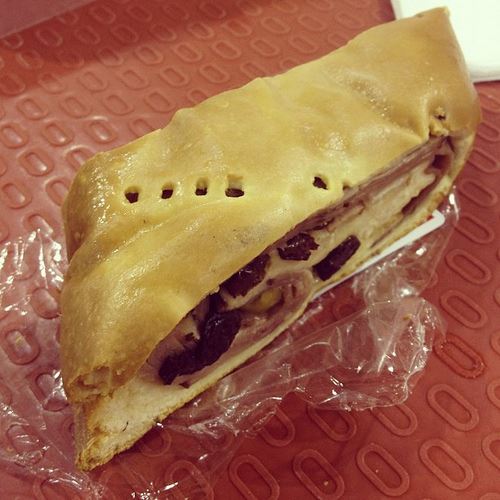
"Mi primer trozo de pan con jamón del 2012....Y los que faltan!", by tecnomovida, at flickr.com
Kind regards,
Luis.
Sponsored by Costaluz Lawyers.
Please click down here:
.jpg)
 0
Like
Published at 11:53 AM Comments (0)
0
Like
Published at 11:53 AM Comments (0)
A spanish village under the rock
Wednesday, January 16, 2013
Setenil de las Bodegas is a village in the province of Cadiz, on the road named “Road of the White Villages”.
A village crossed by the river Guadalporcún. One of the main attractions of Setenil is the beauty and originality of its urban fabric, which descends from an ancient Moorish fortress adapting to the river. In the bottom neighbors have used the pit created in the rock by the river, to build their houses in a design type is called "shelter under rocks."
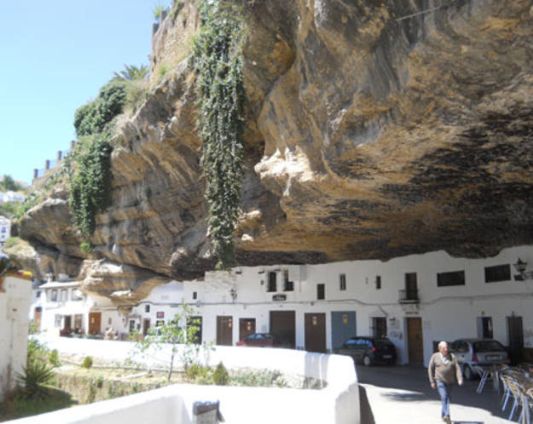
Setenil de las Bodegas, Cadiz, South of Spain.
In Setenil de las Bodegas, in 2008, had 2994 inhabitants.
It is 157 Kms from Cádiz, the capital of the province.
Setenil name comes from the "Seven sites" (Septem nihil) –the last time: in September, 21, 1484-- have occurred since the time of John II of Castile until the time of the Catholic Kings.
In the seventeenth century, Setenil gets rid of Ronda.
In the nineteenth century, Setenil joined other towns in the Sierra, fighting against the French, who invaded Spain.
Today, Setenil still lives especially with Agriculture, as in the past, but also the tourism contributes to economy -.
Between the neighbors, here live: Daniel, Jesús, Encarni, Noelia and Javier.
Daniel is 27 years old; he was born in Setenil but he grew up in Ronda.He studied in the Faculty of Business Administration of Malaga.When he finished it, he went back to Setenil to start his own bussines; now, he is a livestock and he is happy.He has pork products and has his own wine.
Jesús is 41 years old; he was born in Ceuta but arrived to Setenil, in order to investigate the Nasrid fortress because he is an Archeologist.He says that in Spain there are only three Nasrid fortress, like in Setenil.Jesus is now working in the Center Guadalinfo.
Encarni is 40 years old and she was born in Setenil –although she lived in Cadiz and Malaga--. She has opened a hotel and a restaurant, with her husband.
Noelia is 29 years old.She was born in Setenil, but when she was 18 years old, she went to the Costa del Sol, where she was for 8 years, in order to prepare as a Beautician.After that, she went back to Setenil, where she can practice her favorite hobby: riding.She works, with her cousin, dancing beside a horse, in a show that they carry on several parties and festivals.
Javier is 39 years old.His mother is from Setenil and his father is from Cataluña.They met in France, where he was born.When he was 12 years old, he went to Setenil, with his parents.Now he is happy, living in Stenil. Although he works selling products of construction,In the village he is known cause of his hobby of Antique cars restorer.
Interested places to visit in Setenil:
The Nasrid Fortress.
The Church “Nuestra Señora de la Encarnacion”.
Hermitage of “San Sebastian”
Old Town Hall.
Hermitage of Nuestra Señora del Carmen.
Hermitage of San Benito.
Hermitage of Nuestra Señora de la Concepción.
Caves of San Román.
Bridge of the Street Triana.
Bridges of the viila.
Bridge of the street Ronda.
I hope that you enjoy with that.
Kind regards,
Luis.
Sponsored by Costaluz Lawyers.
Pleas click down here:
.jpg)
 0
Like
Published at 7:20 PM Comments (0)
0
Like
Published at 7:20 PM Comments (0)
A very Real Spanish dish
Tuesday, January 15, 2013
The Restaurant “Casa Ciriaco”, in Madrid, opened its doors, as a wine shop, in 1897. In 1923 the premises license is handed over Pablo Muñoz Sanz, who along with his brother Ciriaco Muñoz, have previously worked in the establishment (since 1917).This acquisition gives finally the present name in 1929, because Ciriaco opened the restaurant section. The house became famous for their tables sit among various cultural figures of Madrid such as the journalist and gourmet, Julio Camba; the cartoonist Antonio Mingote, who designed the house seal, or the painter Ignacio Zuloaga, who dined for the last time in this room and was honored in one of its walls; the bullfighter Juan Domingo Ortega and Belmonte (visiting the store stays in Madrid); the painter Sebastian Miranda.
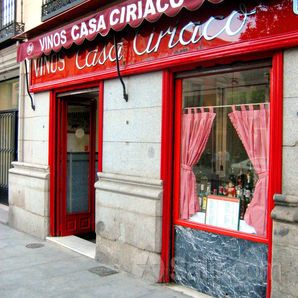
Restaurant "Casa Ciriaco", Madrid, Spain.
The "Casa Ciriaco" became famous for the attempt made by Mateo Morral against Alfonso XIII and Victoria Eugenia on May 31, 1906, the day of their wedding. The bomb was dropped from one of the upper balconies of the building.
Dishes are served with great tradition within the cuisine in Madrid (although kitchen trends Guadalajara), some of the more traditional are: chicken fricassee, which it says is recipe for over a century. Tuesday is customary to prepare the full cooked (Cocido complete), served traditionally in three rollovers (these are the three steps: 1. The cooked soup. It is usually a soup made with thin noodles and usually eaten in a bowl as a starter.2. The chickpeas, potatoes and vegetables.3. The meat: chicken that often, pork and veal. Called so popular as the "dump the food"). It is common to find pickles as tapas consisting trout and Partridge (and stewed) in a mixture of oil, vinegar, salt, garlic, bay leaves and other spices. You can taste the tripe Madrid, partridge with beans from the farm (in season), squid in its ink and meat Rioja. The wine is typical of Valdepeñas.
The most traditional dish is “Chiken fricassee”.It is said that it was the favorite dish of Queen Elizabeth II.Therefore, the famous Spanish writer, Ramón Gomez de la Serna, called to the Queen “La Pepitoria”.Thus, I think that it is a very Real (Royal) dish.
I am going to show you a video with the veteran cooker, Doña Amparo (Miss Amparo), who is cooking a chiken fricassee.Please click down here, where you see a little windows, up and left side, click on the triangle:
http://www.telecinco.es/cocinerossinestrella/
Ingredients:
-A whole chiken.
-Almonds.
-Saffron.
-Onion.
-Garlic.
-Bay leaves.
-Olive oil.
-Flour.
-Salt.
-Water.
First of all, you have to cut the chiken.
After that, you have to fry the chiken –but not too much--.
Apart from this, you have to put a large saucepan with warm water.There, you have put white wine, bay leaves chopped and some bay leaves and a mix made with almonds, saffron and salt.
After that, you have to put the chiken within the broth.
Then, you cut one big onion to fry it.In a while, you put 4 tablespoons of flour.And you move everything and put it within the broth with the chiken.
You can visit “Casa Ciriaco”, that is close to the Puerta del Sol, in the street Mayor, number 84..And also it is very close to the Cathedral of “La Almudena”.
I hope that you enjoy it.
Kind regards,
Luis.
Sponsored by Costaluz Lawyers.
Please click down here:
.jpg)
 0
Like
Published at 4:01 PM Comments (0)
0
Like
Published at 4:01 PM Comments (0)
Saving Lives in Spain
Friday, January 11, 2013
Since 2006, they have not produced massive rescues of immigrants in boats, from África.
According to the Central government authorities in Cadiz, in 3 days (at the end of October 2012), 95 immigrants were stopped and rescued amid the Strait of Gibraltar, trying to reach the coasts of Tarifa, with inflatable rafts, like for children in summer. Authorities were surprised. The greatest problem is that most immigrants can not swim.

"Vistas del Estrecho de Gibraltar, Tarifa", Tarifa, Cadiz, South of Spain, by Chodaboy, at flickr.com
In November, in one day, Maritime Rescue rescued 17 immigrants (10 in a boat and 7 in another one).After that, all of them arrive to the port of Tarifa and Red Cross of Spain serves these immigrants. I take this opportunity to congratulate Maritime Rescue of Tarifa and Red Cross of Tarifa too, for the great job they do, every day, that in the case of Maritime Rescue even risking their lives to save the lives of immigrants.
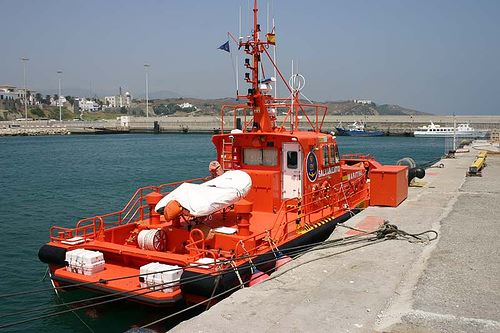
"Lancha de salvamento en Tarifa", Tarifa, Cadiz, South of Spain, by elarequi61, at flickr.com
Red Cross gives clothing to immigrants and makes them a medical examination and after the Civil Guard leads to Algeciras, for repatriation.
One member of the Red Cross of Tarifa says that, in October, 347 immigrants were attended by them.He also says that, although immigrants come risking their lives and with very bad weather, here they feel better themselves than in their countries.It is a pity, because they risk their lives, in the boats, but also they sell everything –or almost everything— they had in their countries.There, they were thinking of the “European Dream” –although when they come here they see that life is not as easy as they thought, before coming--.
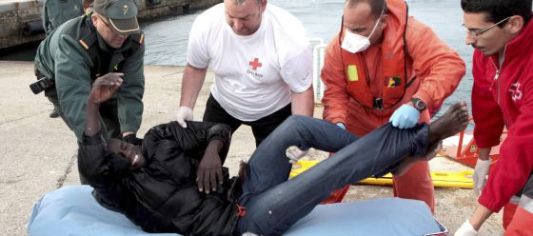
A few years ago, immigrants used large wooden boats, but these were localized by radars.Now, they use small boats to not be seen.

"Patera en la playa", Tarifa, Cadiz, South of Spain, by Chodaboy, at flickr.com
I feel sorry to hear that these immigrants are deceived by organized gangs.
I hope that God help to other people for not to be deceived.
Kind regards,
Luis.
Sponsored by Costaluz Lawyers.
Please click down here:
.jpg)
 0
Like
Published at 7:01 PM Comments (0)
0
Like
Published at 7:01 PM Comments (0)
Craft of the Spanish guitar
Thursday, January 10, 2013
Today I want to talk about an artist –or better said: a family of artists--.They are the family Carrillo.
This family built and continues to build guitars, but in a completely handmade.
Since the eighteenth century that the ancestors of Vicente Carrillo began with the construction of guitars to this day, never paralyzed building guitars in this village of La Mancha called Casasimarro, to the point that, as in the nineteenth century, the town was known by the nickname of "The people of the guitars."
Some evidence supports the contribution of the family of Vicente Carrillo to craft the guitar world, for it is seven links of the supply chain to initiate that Anselmo Alfonso Alarcon, whose knowledge will be imbued possibly guitarists in Andalusia, particularly in Granada .
Anselmo Alfonso Alarcon is the first person known to be engaged in the office Casasimarro guitar. He was born around the year 1744. In the National Historical Archive find the document we are told that Alfonso Anselmo is devoted to the construction of the guitar. The file is 35 752 and, on page 17, says: "... in the Supreme Council in the name of Alfonso allegedly Anselmo Alarcón, who was master of first letters, and now occupies as a profession in making guitars, and heels, and is now in the Court (Granada) ... ".
Then will his son Juan de Mata Alarcón C, who devote their lives to the same profession. But his glory lies in getting all their children as noble exercise ministry, their names being: Peter Julian (1801-1885), Philip (1803-1818 ..?), Anselm (1808-1883) and Victorian (1814-1888) addition to Agustina (1810-1818 ..?), which marry Manuel Felipe Carrillo (1807-1818 ..?) and will, in turn, the starting point of the saga of Carrillo.
Manuel Felipe Carrillo was born in 1807 and married Agustina Alarcón Escudero (b. 1810), daughter of Juan de Mata Alarcón guitarist, and, therefore, sister and granddaughter of guitarists. This couple are born trunk where the branch of the saga of Carrillo.
Blas Carrillo Alarcón (1834-1919), son of Philip Manuel and Agustina, is known by the nickname "Grandfather Moreno". Blas, from his tiny workshop, located at No. 58 of the Rue de la Concepción, according to its label reads, spread the love of the guitar throughout Castile-La Mancha. In his workshop formed one of the most famous guitarists of his time at national level: his son Vicente Carrillo Lopez. The label signing on his guitars reads: "Old and Accredited guitar factory, Leaflets, Bandurrias and zithers, Blas Carrillo and Son" and likewise, Domingo Prat in his book and Guitarreros Guitarists of Spain says "... in Casasimarro, in 1888, there are several guitarists, including Blas Carrillo Alarcón is who without doubt the most versed in the art ".
.jpg)
Blas Carrillo Alarcón
Vicente Carrillo Lopez (1881-1962) rubbed shoulders with the great guitarists of the time. So we can remember his friendship with Domingo Esteso Lopez, one of the most important pillars of the renowned Madrid's Manuel Ramirez workshop. Vicente Carrillo Lopez had the bright idea of bringing their guitars to the International Fair of Seville, held in 1929. There, when the guitar is ready to relax, a murmur, which soon turns into shouting and shoving risen everywhere, looming figure of Queen Victoria Eugenia of Battenberg, wife of Alfonso XIII, with a "large group of well- guardians", --said the guitarman--.
.jpg)
Vicente Carrillo López and his son.
After contemplating the small exhibition of guitars from La Mancha, is interested in the price of one. The guitar, his voice breaking with emotion, says the Sovereign: "Majesty, accept this humble gift of a guitar." The news spread throughout Seville, Seville and a colleague who had witnessed the scene all merchandise purchased. The story has been often discussed when talking about guitar Casasimarro.
In his label continues Conception Street address, and likewise 58 puts "Vicente Carrillo, Guitar Factory, mandolins, lutes, lyres and mandolins. Awarded the National Crafts Exhibition". Manuel González Ruano, from his rostrum in Frankfurt (Germany) states, "Vicente Carrillo Lopez attained such prestige in his profession, that from different parts of Spain, especially in Andalusia, they were to Casasimarro in order to acquire his guitars ."
Vicente Carrillo Cantos (1926-1971). He died at the early age of 44, is the sixth generation founded by Alfonso Anselmo and is the fourth step in the saga. It extends the family market and disseminates Carrillo label not only by Castille-La Mancha and all Spain, but for the world, from Japan to the U.S. and from Europe to land in South and Central America. The workforce is large and the echo of his guitars are heard everywhere. Thus, in 1970, he was awarded the title of "CRAFTSMAN DISTINGUISHED" nationwide.
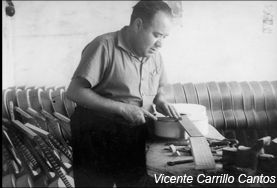
Vicente Carillo Cantos
Gabriela Casas Fornier (1928-2005), on the death of her husband Vicente Carrillo Cantos, took charge of the workshop and, with seventeen workers who make up the staff, maintains the label now reads "Widow of Vicente Carrillo" and fame acquired, to the extent that, in 1997, the Regional Government of Castilla-La Mancha granted the title of "master craftsman."
.jpg)
Gabriela Casas Fornier
Here, you can see some models of guitars, from the family Carrillos ´ shop:
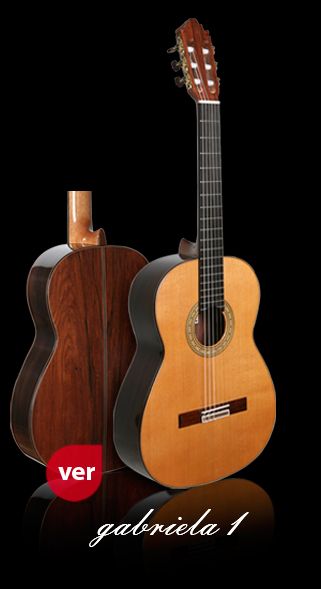
Classic 1 guitar
.jpg)
Special first one.Classic guitar.
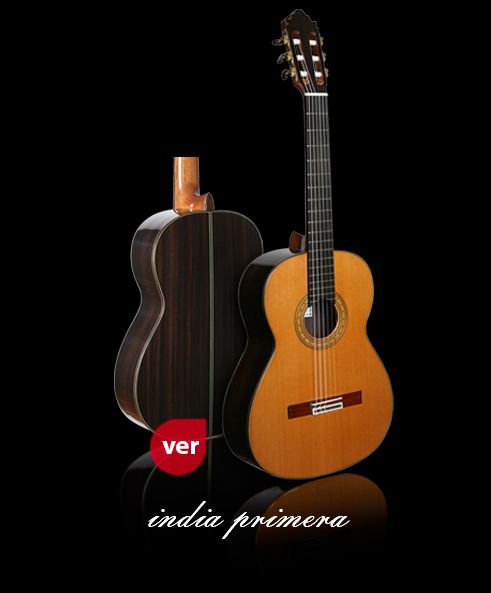
First one India.Classic guitar.

Study India.Classic guitar.
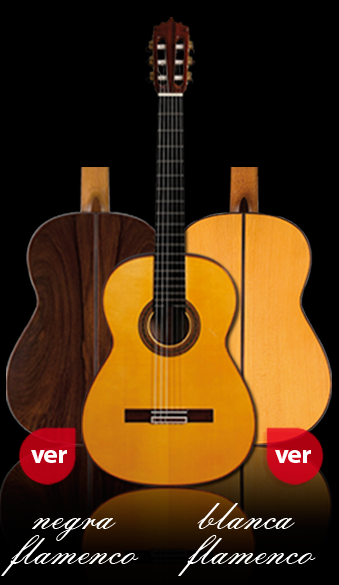
Black Flamenco and White Flamenco.Flamenco guitars.

India Flamenco.Flamenco guitar.
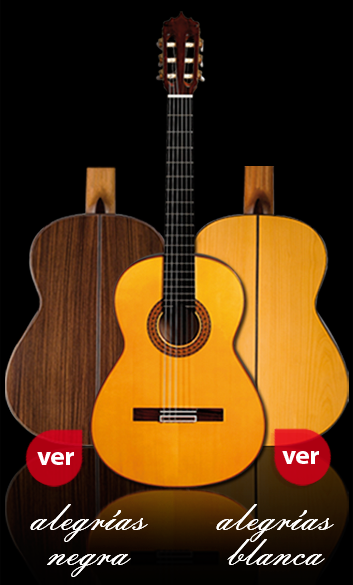
Alegrías black and Alegrías white.Flamenco guitars.
Kind regards,
Luis.
Sponsored by Costaluz Lawyers.
Please click down here:
.jpg)
 0
Like
Published at 1:07 AM Comments (0)
0
Like
Published at 1:07 AM Comments (0)
Urban gardens in Spain
Saturday, January 5, 2013
I have listened on the radio to talk about the Project by Isidro Nuñez (a project named “Huertos Urbanos” = “Urban Gardens”).
Isidro and other members of the groups in Spain try the training in the working of fruit horticulture. All groups grow potatoes, tomatoes, lettuce and other vegetables and fruits.
In Madrid, there are around 30 groups; but some of them grow vegetables and fruit for their own consumption and another groups are Cooperatives for organic food distribution.
But, there are another cities, where there are several Urban Gardens; for example: Barcelona, Sevilla, Granada, Málaga…….
In those projects –-sometimes sponsored and funded in part by some Municipalities, like the Town Hall of Madrid— use to work old people, who have no job and they have Urban Gardens as a hobby. But also, there are many young people, who are looking for a job, in their cities, for several hours, and spend the rest of the day growing vegetables and fruits.
.jpg)
Urban Garden in Barcelona (North-east of Spain), by Stefanie Fock.
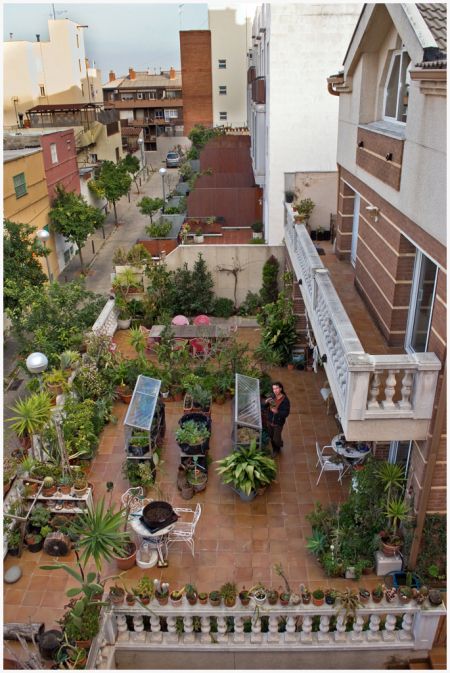
Another Urban Garden in Barcelona.

"Inside a home in Barcelona"
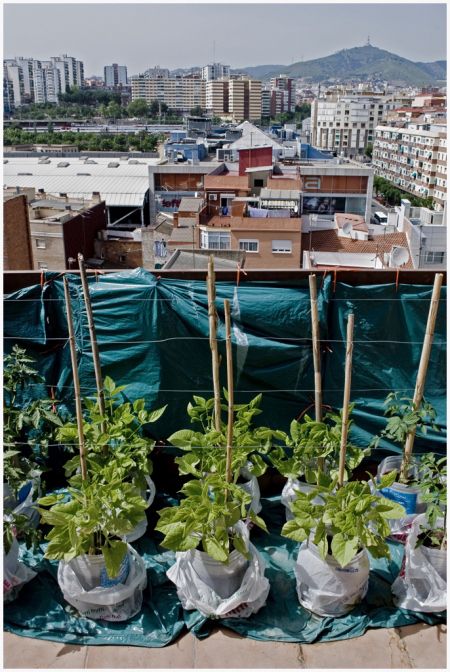
Another view of Barcelona from an Urban Garden.
.jpg)
Another Urban Garden beside the city.
Two conditions for having an urban garden are digging by hand or with a shovel, but never farm machinery. And secondly, you can not use fertilizer, you can only use natural fertilizer, which in these gardens is achieved the same waste of vegetables.
The groups that have urban gardens, not just planting their seeds, but also exchange different seeds between themselves.
I think these projects of Urban Gardens are very interesting, because they approach the natural life of the field to the city, which is more artificial.
Kind regards,
Luis.
Sponsored by Costaluz Lawyers.
Please click down here:
.jpg)
 0
Like
Published at 12:05 AM Comments (1)
0
Like
Published at 12:05 AM Comments (1)
Spam post or Abuse? Please let us know
|
|